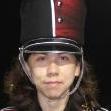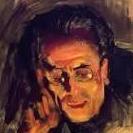-
Posts
2,593 -
Joined
-
Last visited
-
Days Won
220
PeterthePapercomPoser last won the day on December 16
PeterthePapercomPoser had the most liked content!
About PeterthePapercomPoser

- Birthday April 10
Profile Information
-
Biography
Composer living in California who facilitates a short story writing class and also participates on writingforums.org. Working on creating a story and music based RPG maker role playing game. Interested in all arts. During the holiday season, I'm known as PeterPartakesofCornPudding. 🇵🇱 Click on the "About Me" tab on the right for a complete catalogue or press kit of my compositions!
-
Gender
Male
-
Location
California, USA
-
Occupation
Soon to be Mental Health Worker and Addictions Counselor
-
Interests
Musical Composition, Short Stories and books and different kinds of art. I did the cover art.
-
Favorite Composers
Tchaikovsky, Beethoven, Ravel, Stravinsky, Prokofiev, Lutoslawski (only the more tonal works), John Williams, Elliot Goldenthal, Jerry Goldsmith
-
My Compositional Styles
on paper/linear, thematic, harmonic language variable
-
Notation Software/Sequencers
Used to use Cakewalk Home Studio with Yamaha XG Midi soundbank. Now I write everything on paper and copy it into MuseScore. Also a very much beginning user of Reaper, although I don't foresee using it much given MS4's capabilities..
-
Instruments Played
Clarinet, Piano, Trumpet, French Horn, Acoustic Guitar, Chromatic Harmonica (in that order)
Recent Profile Visitors
PeterthePapercomPoser's Achievements
-
PeterthePapercomPoser started following 3 Leaves - 3 Movement work for Flute, Oboe, Cello , Music Binding , Trumpet Concerto in C and 1 other
-
If you make a lot of changes and want to preserve the old version so that people (and you) will be able to see the progress that you've made then you might want to create a new topic. I have a few things that I want to tell you about this piece too! Like for example just this first phrase: I perceive the downbeat of the melody on the 1st eighth note, but you have it offset by an eighth rest meaning that all your downbeats are on the off-beat. Also, 8/4 is an uncommon meter and I hear this piece as being in 4/4 but with all note durations halved like so: It's a charming and simple piece though! Thanks for sharing!
-
Hey @BlackkBeethoven! I was thinking of some alternate explanations for why you might perceive your music as not sounding "full". Quality of your sound samples - If you're using low quality samples or general midi or Musescore Basic Soundfonts this might be the cause of your dissatisfaction rather than anything about the quality of the harmonies or how full the textures you're using are. Lack of reverb or realistic room effects - If your renderings are very dry and without any realistic reverberation to let the instruments really resonate then that might be another thing that might be causing your poor impression. Avoidance of Dissonant Intervals - Choral harmony uses lots of beautiful rubs or dissonant passing tones or suspensions and if you haven't learned how to incorporate some of these dissonant voicings your SATB arrangements might sound bland to you. These are just some ideas off the top of my head for why you might experience your music as not sounding "full". I hope some of this was helpful!
-
.thumb.png.8b5b433a341551e913a34392660bc95b.png)
Intonent Hodie - 4 carols for choir
PeterthePapercomPoser replied to mercurypickles's topic in Choral, Vocal
I've had various issues with Musescore 4 too over the years, but they've updated it multiple times since last year around this time. Have you tried re-rendering it now with the new updates in place? Maybe it's no longer an issue? -
PeterthePapercomPoser started following mahler2009
-
.thumb.png.8b5b433a341551e913a34392660bc95b.png)
2025 Christmas Music Event!
PeterthePapercomPoser replied to PeterthePapercomPoser's topic in Monthly Competitions
@J. Lee Graham's submission to the event: -
.thumb.png.8b5b433a341551e913a34392660bc95b.png)
2025 Christmas Music Event!
PeterthePapercomPoser replied to PeterthePapercomPoser's topic in Monthly Competitions
No .. there are no rules! You can submit as many pieces as you want. @J. Lee Graham - yes, please submit a link to your piece in this thread. Thanks for your participation! -
.thumb.png.8b5b433a341551e913a34392660bc95b.png)
2025 Christmas Music Event!
PeterthePapercomPoser replied to PeterthePapercomPoser's topic in Monthly Competitions
Here is @Musicman_3254's submission: -
.thumb.png.8b5b433a341551e913a34392660bc95b.png)
Intonent Hodie - 4 carols for choir
PeterthePapercomPoser replied to mercurypickles's topic in Choral, Vocal
Hello @mercurypickles! Great job! It's a shame this set of Carol's got so little attention on account of being submitted so late in the event. I was also puzzled about why you chose to use the piano in the part of the piece where you did. Did Musescore have a hard time rendering that many voices at once? I've been making some Christmas Mash-up's lately for choir and string orchestra and I didn't run into any problems with rendering too many voices at once. I'm really curious about the particular problems you encountered. Thanks for sharing! -
.thumb.png.8b5b433a341551e913a34392660bc95b.png)
Another Christmas Mash-up
PeterthePapercomPoser replied to PeterthePapercomPoser's topic in Choral, Vocal
Hey Henry I was just thinking about what you said and now that I think about it more there are probably more unexplored variations that could probably start with "Jezus..." instead of "God Rest..." .. I just went with the first successful combination I found honestly -
.thumb.png.8b5b433a341551e913a34392660bc95b.png)
Another Christmas Mash-up
PeterthePapercomPoser replied to PeterthePapercomPoser's topic in Choral, Vocal
Thanks for the advice. I tried two different other ways of combining the two Carols together so that they would finish their stanzas at the same time. My first attempt was to use a 6/8 variation of "God Rest..." while having the "Jezuz Malusieńki" in 3/4. There were 3 trailing measures at the end of "God Rest..." solo without "Jezus...". In another variation I had both Carols in 3/4 and had 4 measures of "God Rest..." solo without "Jezus...". Also, "God Rest..." has a pick-up anacrusis note while "Jezus..." starts right on the beat. The staggered entrances I used in the mash-up were my solution to these problems with the goal being to have both Carols coincide and finish their stanzas at the same time. I don't think there's any other way of achieving that - I think I tried quite a few alternate ways. -
.thumb.png.8b5b433a341551e913a34392660bc95b.png)
Another Christmas Mash-up
PeterthePapercomPoser replied to PeterthePapercomPoser's topic in Choral, Vocal
Both the English and the Polish melodies are tossed around the different registers of the choir, sometimes being in the Sopranos, sometimes in the Basses, Baritones or Tenors. Is that what you mean? I don't really think either Carol melody "leads" in this piece. -
.thumb.png.8b5b433a341551e913a34392660bc95b.png)
Another Christmas Mash-up
PeterthePapercomPoser replied to PeterthePapercomPoser's topic in Choral, Vocal
I felt like I had to find a way to include all 6 stanzas of each Carol in the piece! And the modulations are each prepared by a V chord right before each modulation (in bar 73 the F major chord prepares the modulation to Bb minor and in bar 113 the modulation to B minor is prepared with a Gb major chord). Thanks for your review! -
.thumb.png.8b5b433a341551e913a34392660bc95b.png)
2025 Christmas Music Event!
PeterthePapercomPoser replied to PeterthePapercomPoser's topic in Monthly Competitions
My 2nd submission to the event! -
For my 2nd submission to this year's Christmas Music Event I come to you with yet another mash-up of two Christmas Carols! "God Rest Ye Merry Gentlemen" and "Jezus Malusieńki" ("Little Jesus" in Polish). I have input 6 stanzas of each Carol here into the score. I once again wish I had Cantamus as listening to both the English and Polish lyrics at the same time would really enhance the listening experience to those who speak both languages. The piece starts off with a 3/4 variation of "God Rest Ye Merry Gentlemen" and then follows a stanza of "Jezus Malusieńki" before the Carols are combined together at the same time in various different ways, some of which are slightly polytonal. I've been told that the harmony reminds of the English Renaissance in some parts, but let me know what you think! Thanks for listening and I'd appreciate any comments, suggestions, critiques or just observations! P.S.: Here is my first Christmas Mash-up that I submitted earlier for this years Christmas Music Event:



















